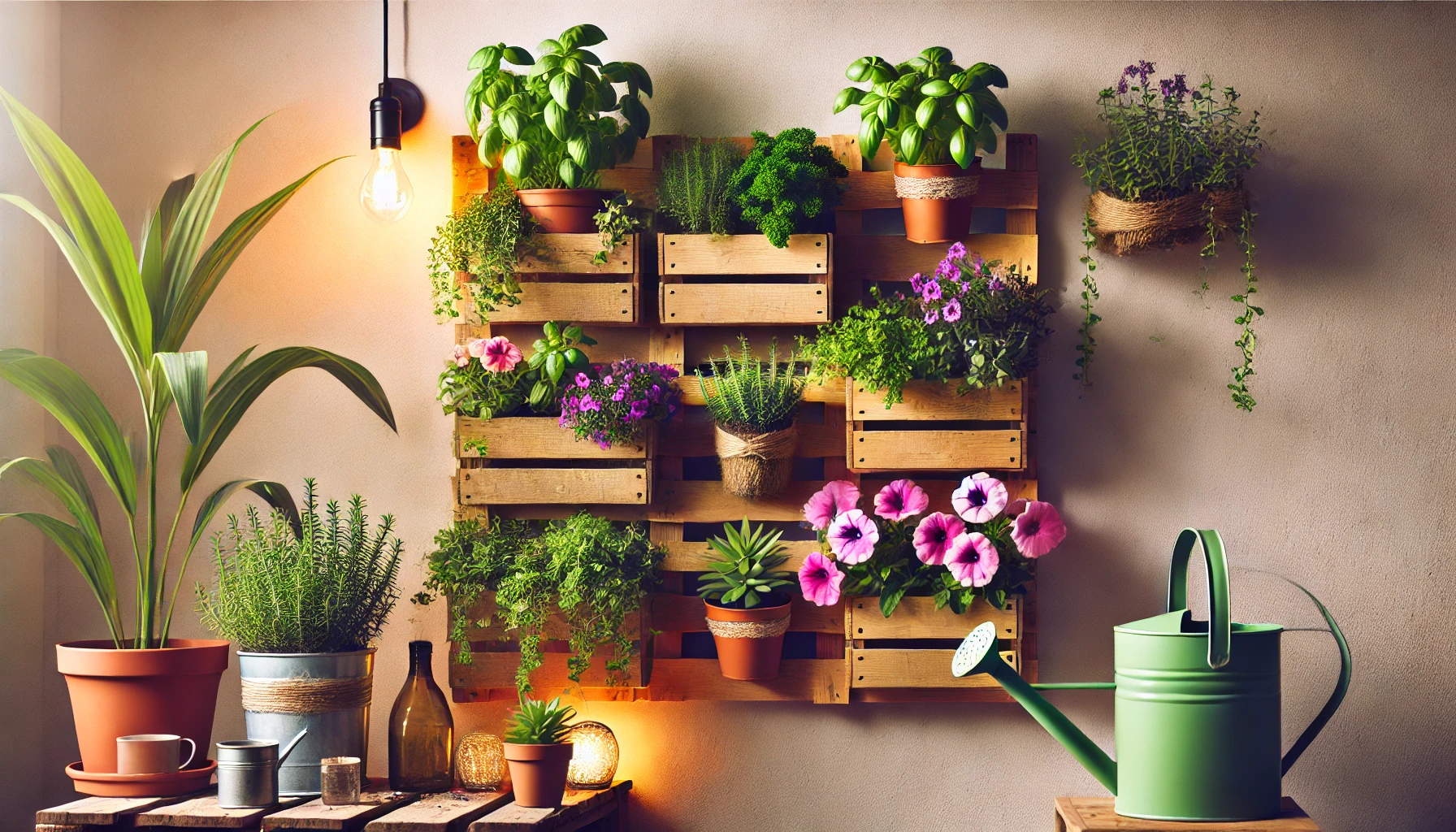A vertical garden is an innovative way to add greenery to your home, especially if you’re short on horizontal space. Whether you want to grow herbs, flowers, or decorative plants, creating a vertical garden is a practical and beautiful solution. This step-by-step guide will help you build your own vertical garden, enhancing your living space with a touch of nature.
Benefits of a Vertical Garden
Vertical gardens are more than just visually appealing. Here are some reasons to consider building one:
- Space-Saving: Ideal for small apartments, balconies, or homes with limited garden space.
- Air Quality Improvement: Plants purify the air, making your environment healthier.
- Aesthetic Appeal: Adds a natural and vibrant look to any indoor or outdoor space.
- Energy Efficiency: Outdoor vertical gardens can provide shade, reducing heat and energy costs.
Materials You’ll Need
Before starting, gather the following materials:
- Structure: A wooden pallet, trellis, wall-mounted planter, or prefabricated vertical garden system.
- Pots or Containers: Small pots, recycled bottles, or planter bags.
- Soil: Well-draining soil suitable for your chosen plants.
- Plants: Herbs, flowers, succulents, or decorative foliage plants.
- Mounting Tools: Screws, nails, brackets, or strong adhesives.
- Watering System: A spray bottle, watering can, or drip irrigation system.
- Optional: Fertilizer and decorative elements like lights or pebbles.
Step-by-Step Guide
Step 1: Choose the Location
Select a spot with adequate lighting for your plants.
- Indoor: Place near windows with bright, indirect light.
- Outdoor: Use walls with partial shade or full sun, depending on your plants’ needs.
Ensure the wall is sturdy enough to support the weight of the garden.
Step 2: Prepare the Base Structure
The structure serves as the foundation of your vertical garden.
- Clean and sand wooden pallets or trellises to ensure safety and durability.
- For prefabricated systems, follow the manufacturer’s assembly instructions.
- Attach hooks, brackets, or screws to secure the structure to the wall.
Step 3: Select and Arrange Containers
Choose containers that fit the structure and provide enough space for root growth.
- Drill drainage holes if necessary to prevent waterlogging.
- Arrange the containers on the structure, considering the spacing for light and air circulation.
Step 4: Choose the Right Plants
Select plants based on the location’s lighting and humidity conditions.
- Herbs: Basil, parsley, mint, and thyme thrive in sunny spots.
- Flowers: Petunias, marigolds, and pansies add vibrant colors.
- Succulents: Aloe vera, echeveria, and jade plants are great for low-maintenance gardens.
Group plants with similar care needs together for easier maintenance.
Step 5: Add Soil and Plants
Fill the containers with well-draining soil, leaving space for the roots.
- Plant each species gently, ensuring the roots are fully covered.
- Water lightly to settle the soil around the roots.
Step 6: Install a Watering System
A proper watering system ensures your plants stay hydrated.
- Manual: Use a watering can or spray bottle for small setups.
- Automatic: Install a drip irrigation system for larger gardens to save time and water.
Ensure water reaches all plants evenly.
Step 7: Secure the Garden
Double-check the stability of the structure and containers.
- Tighten screws and brackets to prevent movement.
- Adjust the position of containers if needed for balance.
Step 8: Add Finishing Touches
Enhance the visual appeal of your vertical garden.
- Add decorative stones, fairy lights, or labels for a polished look.
- Use climbing plants to create a cascading effect.
Maintenance Tips
- Watering: Check soil moisture regularly and avoid overwatering.
- Pruning: Remove dead leaves and trim overgrown plants to maintain a tidy appearance.
- Fertilizing: Feed your plants with organic or liquid fertilizers during the growing season.
- Pest Control: Inspect for pests and treat infestations promptly with natural remedies.
Conclusion
Building a vertical garden at home is a rewarding project that combines creativity with practicality. By following these steps and maintaining your garden with care, you’ll create a vibrant green space that enhances your home while bringing you closer to nature. Whether indoors or outdoors, your vertical garden will be a testament to your love for plants and smart design.
